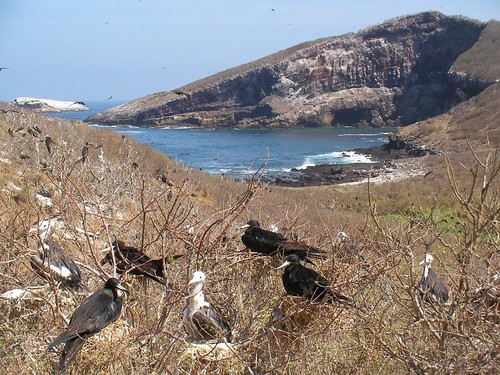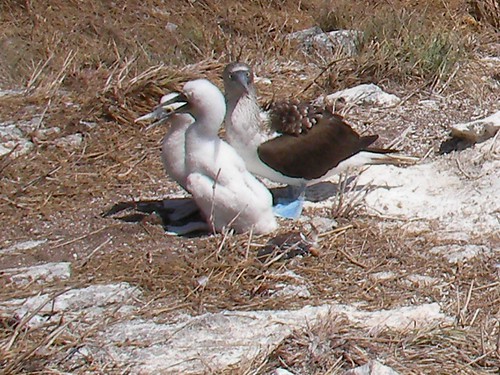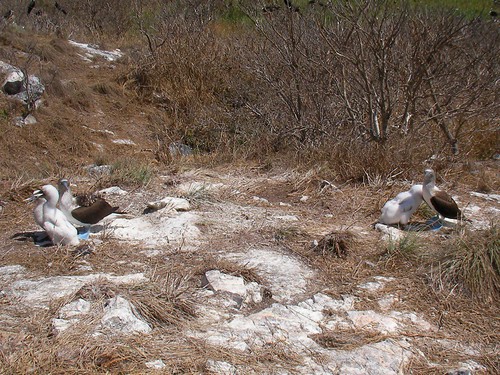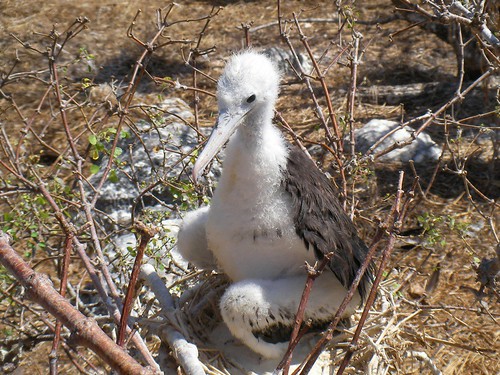Isla Isabela
Isla Isabela is an isolated island about 2km long and less than 1km wide about 30km offshore. It is a nesting ground for sea birds, including the blue footed boobie. For this reason the island is a national park.
Isabela has three anchorages, none of them very good. We anchored in the most popular anchorage, on the east side of the island just south of a pillar rock. The short channel between the pillar rock and Isabela is shallow and foul with many rocks. These boulders continue to be scattered along the bottom as the water deepens, and the water is crystal clear so you can see the giants in 10m of water. We kept our cool and anchored in 12m. Weather conditions were light while we anchored (we had to motor to and from Isabela for lack of wind) but we rocked all night even with our new roll-suppressor hung off the end of the boom.
The southern anchorage is arguably better sheltered, but it is somewhat narrow and shallow and also littered with boulders, some of which come too close to the surface. When entering the southern anchorage keep to the center. The dangerous rock inside the SE entrance is not the one above water, or the next one that breaks, or the following one with its slick, but the fourth one from the point hiding quietly about 50m from the point.
The western anchorage looks quite marginal. In any case it would only be useful in easterly seas, which are uncommon.
Once you've made it ashore, Isabela is more than worth it. Isabella is one of the few places in the world where Blue Footed Boobies nest. It is also a nesting site for other sea birds. There are thousands of Frigate birds who can be approached quite closely, and a handful of Heerman's gulls who protect their young aggressively.
The fishing village in the southern anchorage has a about a dozen large corrugated metal huts. It appears to be inhabited full time with perhaps 50 inhabitants.
Isabela is a must see for any boat transiting this coast.





